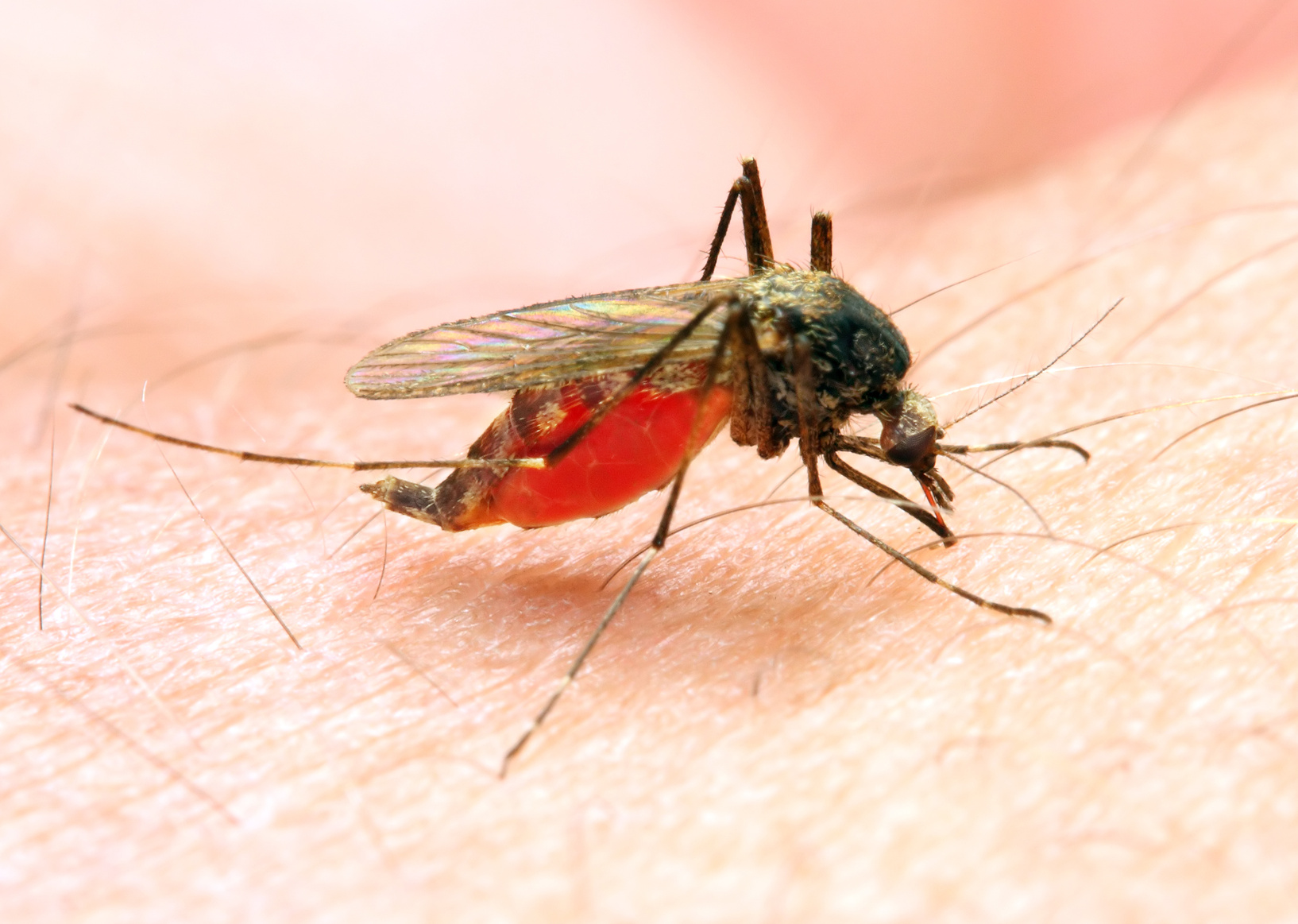Effect of Nursing Intervention on Knowledge of Malaria Prevention among Mothers of Under-Five Children in Selected Primary Health Care, Mushin Local Government, Lagos

Abstract:
Introduction: Malaria is a major public health problem in Africa. The disease
is a significant contributor to the poor health situation in Africa, in which Africa
alone is estimated to lose at least US$ 12 billion per year in direct losses e.g.
illness, treatment, premature death. Almost 1 out of 5 deaths of children under
5 in Africa is due to malaria. Due to the high figure, there is still the need for
continued awareness and renewed commitment for the prevention of malaria especially
among the risk group (under-five and pregnant women).
Objective: The study assessed
the effect of the nursing intervention on knowledge of malaria prevention among
mothers of under five in a selected PHC and also described the level of knowledge
of mothers on malaria in a selected PHC in Mushin LGA pre and post-intervention.
Methods: This is a quasi-experimental design. Data collection was done
using a structured, self-administered questionnaire to obtain information from the
participants. This study was carried out in three phase which involved three phase
(pre-intervention, intervention and post-intervention) activities in process of
data collection.
Results: The findings of the study showed significant difference between
posttest knowledge of malaria prevention and pretest knowledge of malaria prevention
among mothers of under-five children.
Conclusion: This study revealed
that knowledge of mothers of under-five on malaria and various malaria prevention
strategies improved. This study recommended that Mothers of under-five should be
regularly exposed to training programs on malaria and malaria prevention.
Keywords: Nursing intervention, Malaria prevention, Under-five
children, Prevalence.
References:
[1]. Achan Quinine. (2011). An old antimalarial drug in a modern world.
Malaria Journal, 1475-2875,142-144.
[2].
Adedotun, A., Morenikeji, O.,&
Odaibo, O. (september, 2010). Knowledge, attitudes and practices about malaria in
an urban community in south-western Nigeria. journal of vector borne diseases, 47:155-159.
[3]. Adegun, A.,Adegboyega, A.,& Awosusi,
A. (2011). Knowledge and the preventive strategies of malaria. Peer journal,
883-889.
[4].
Ajayi,I., Falade, O.,Bamgboye,
E.,Oduola, A.,& Kale, O. (2008). Assesment of treatment guideline to improve
home management of malaria in children in rural south-west Nigeria. Malaria journal,
7-24.
[5].
Akande, M.,& Musa, O. . (2005).
Epidemiololgy Of Malaria In Africa. Africa Journal Of Clinical And Experimental
Microbiology., 1575-689A:107-111.
[6].
Arogundade,E., Adebayo, S., Anyanti,
J.,Nwokolo,E., Ladipo,O., Ankomah,A.,& Meremikwu, M. (2011). Relationship between
caregivers' misconceptions and non use of ITNs by under- five Nigeria children.
Malaria journal, 10:170.
[7].
Autino, B., Noris, A., Russo, R.,
& Casteli, f. (2012). Epidemiology of malaria in endemic areas. Mediterranean
Journal Of Heamatolgy and infectious diseases, 2035-3006.
[8]. Ayodeji, A., Oluwaseun, A., & Eniola, C.,. (2015). knowledge
of malaria prevention among pregnant women and female caregiversof under-five children
in rural southwest Nigeria. Peer Journal.
[9]. Centre for disease control. (2015). medication and dosage for
prevention of malria while travelling. http://www.cdc.gov/malarai.
[10]. Centers for disease control. (2011, august 19). Retrieved march
19, 2016, from http://www.cdc.gov/malaria/abouthistory.
[11]. Clive Shiff. (2010). Epidemiology of malaria: integrated approach
to malaria control. Clin Microbial, 15(2):
278-293.
[12]. David Sullivan. (2010). Epidemiology and pathology of malaria.
johnshopkins bloomberg school of public health.
[13]. Dehli, N.(2014). Guidelines
for Diagnosis and treatment of Malaria in India.
[14]. Fatungase, k., Amoran, O., Alausa, K. (2012). The effect of health
education intervention on home management of malaria among the caregivers of children
aged under 5 years in ogun state, Nigeria.
[15]. Federal Ministry of Health. ( 2011, june). Retrieved march 2016,
from Nigeria National policy on Malaria Diagnosis and Treatment: http://www.nmcpnigeria.org
[16]. Francis Cox. (2010). History of the discovery of malaria parasites
and their vectors. parasitic vectors, 1756-3305;3-5.
[17]. Global Funding Of Innovation For Neglected Diseases. (2011, december).
Retrieved from global funding website.
[18]. Hays, N., Santa,B. (2013). Epidemic and pandemic: their impacts
on human history. World malaria journal, ABC-CL10.
[19]. Hay, S.,Smith, D.,Snow, R. (april 2008). Measuring malaria endemicity
from intense to interrupted transmission. Elsevier sponsored documents, 8(6): 269-378.
[20]. Health protection Agency. (n.d.). Malaria treatment guidelines.
Retrieved april 2016, from http://www.hpa.org.uk/topics/infectious
diseases/infectionAZ/Malaria/Guidelines/mal20quidelinesTreatment/
[21]. Jacquerioz. (Rev.Oct 7,2009). Drugs for preventing malaria in
travellers. Cochrane database.
[22]. Jimoh. (2007). Quantifying the burden of malaria in Nigeria using
the willingness to pay approach. 1478-7547-5-6-1-8.
[23]. Killeen, G.,& Nakul,C. (2014). Potential causes and consequences
of behavioural resilience and resistance in malaria vector populations. Malaria
Journal, 1475-2875:13-97.
[24]. Lalloo, D., & Hill, D. (June,2008). preventing malaria in
travelers. biomedical journal, 336:1362.
[25]. Malaria policy center. (2014, february 17). malaria 101. Retrieved
may 06, 2016, from http://www.malariaploicycenter.org/malaria101/history-malaria
[26]. National department of health South Africa. (2009). The guidelines for prevention of malaria in South
Africa.
[27]. Nigeria Malaria Factsheet. Economic Section, United State Embassy
In Nigeria. . (2011, december on 26 march 2015). Retrieved from Nigeria US Embassy
website: http://www.nigeria.usembassy.org
[28]. Nigeria Malaria Indicator Survey 2010. (2012, january accessed
on 27 march 2015). Nigeria Malaria Control Programme. Retrieved from dhsprogram
website: http://www.dhsprogram.com/pubs/mis8/mis8.pdf
[29]. Okonkwo, R C. (2013). Prevalence of HIV Infection In Pulmonary
Tuberculosis Suspects. Advances In Life Science And Technology, 2224-7181:87-90.
[30]. Olalekan, S.,& Nurudeen, S. (2013). Malaria burden and effectiveness
of malaria control measures in Nigeria. Journal of Economics and sustainable
development, 2222-1700:295-308.
[31].
olorunfemi., E.A. (2013). Impact
of health education intervention on malaria prevention practices among nursing mothers
in rural communities in Nigeria. Nigeria Medical
journal, 115-122.
[32].
Pelletier
& Caventou. (2012). 'Suite:Des recherches chimiques sur les quinquinas', . Annales
de chimie et de physique , vol. 15, pages 337-365.
[33]. Roll Back Malaria. (2008). global strategy plan 2005-2015. Retrieved from
rbm.who website: http://www.rbm.who.int/forumv/docs/gspen.pdf.
[34]. Singh. (2016). Ownership and use of insecticide treated nets during
pregnancy in sub-sahara Africa. Malaria Journal.
[35]. Sok Chul Hong. (december 2009). The burden of early exposure to
malaria in the united states in the 1800s. 67(4):1001-1035.
[36]. The Executive summary of the Global Malaria Action Plan For The
Roll Back Malaria Partnership 2008. (2008). Retrieved from roll back malaria: http://www.rollbackmalaria.org/micrositos/gmap/0-5.pdf
[37]. Udonwa, N.,Gyuse, A., & Etokidem, A.
(2010). Malaria: Knowledge and prevention practices among school adolescents
in a costal community in Calabar, Nigeria. Africa
Journal, 2(1): 3-5.
[38]. WHO. (2006, july). Global Malaria programme (Gmap). Retrieved
april 2016, from Use of indoor residual sprayng for scaling up global malaria control
and elimination: http://www.WHO.int/malaria.
[39]. WHO global malaria program. (2014). world malaria report.
Retrieved from roll back malaria : http://www.rollbackmalaria.org/files/files/about/9789241564830-eng.pdf
[40]. WHOguidance forcountries on combining IRS with ITNS. (march 2014).
World Health Organisation.
[41]. World health organisation. (2015). WHO Guidelines for treatment
of malaria.
[42]. WHO. (2009). international travel and health. malaria journal.
[43]. World Health Organisation Lives At Risk. (2013). malaria in
pregnancy. Retrieved from WHO.int: http://www.WHO.int/features/2013/04b/en.
[44]. World Health Organization. (2009). World Malaria Report 2008
Geneva. Retrieved from WHO Web site: WHO/HTM/GMP/
[45]. World health organisation. (n.d.). WHO media centre information on malaria. Retrieved April 24th, 2016,
from http://www.WHO.int/mediacentre/factsheets/fs094/en/
[46]. WHO. (2013, september). recommendations
for acheiving unuversal coverage with long lasting insectiidal treated nets.
Retrieved april 2016, from http://www.who.int/malaria/mpac sp13 vcteg universal
llin coverage report pdf.

